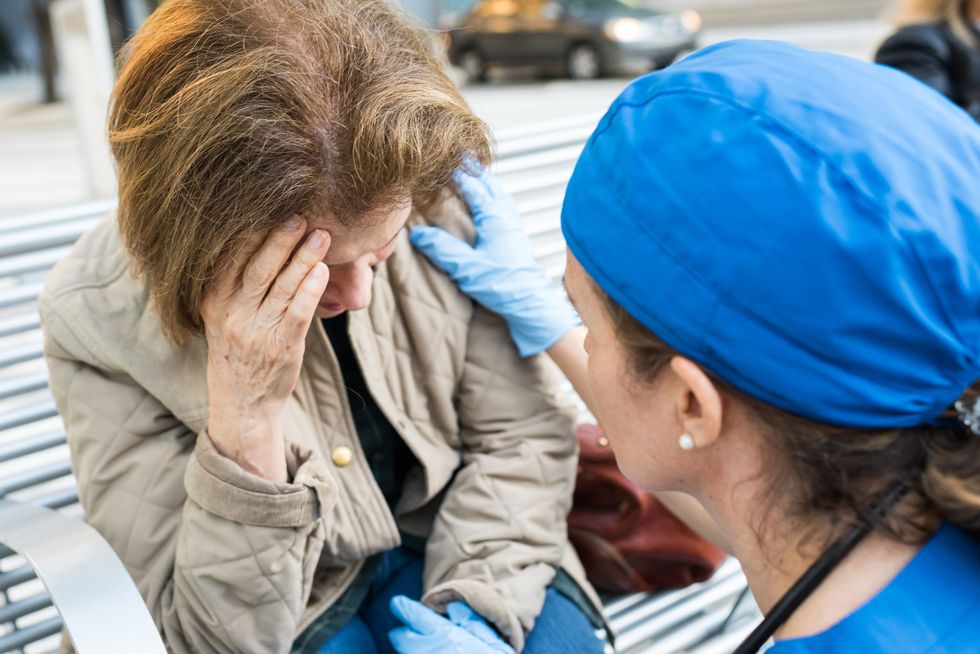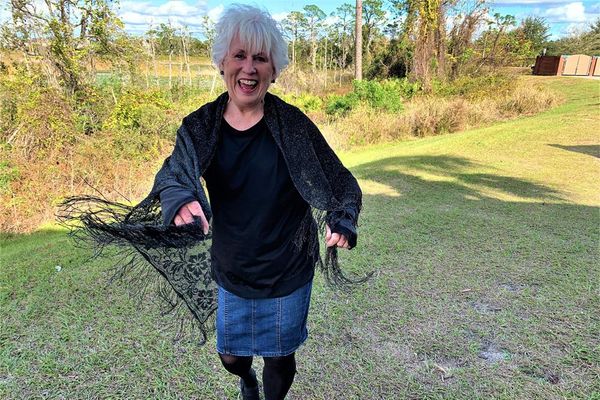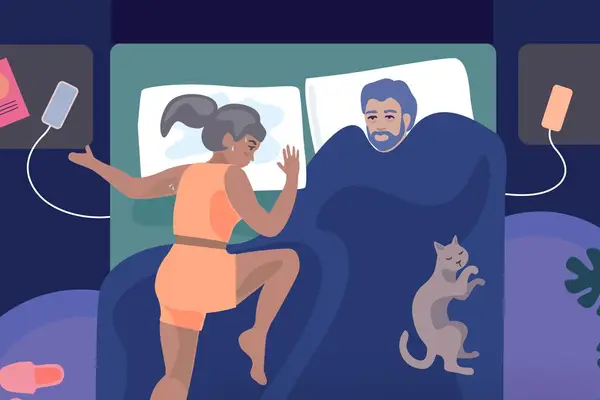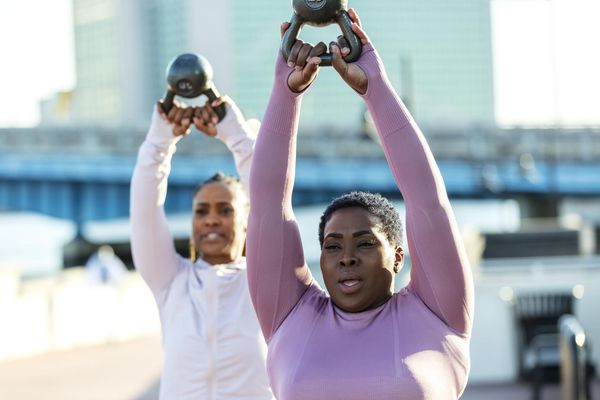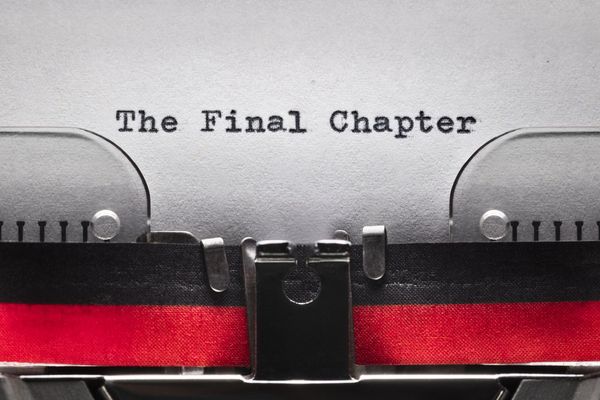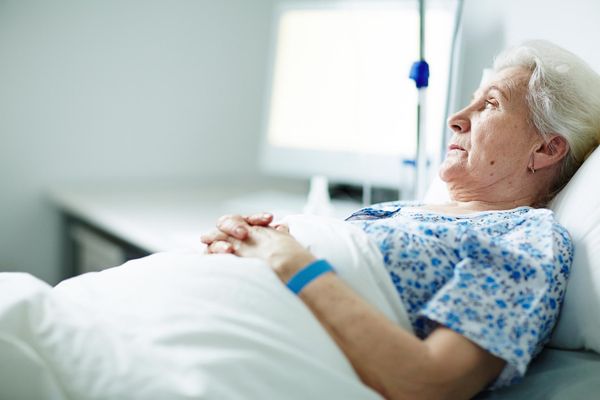If you ever witnessed a loved one fall or faint from low blood pressure, you know how frightening and potentially dangerous a fall can be. But do you know why a loved one faints or falls?
The problem I have seen so many times is that no one gets to the bottom of why the fall or faint happened. That's where you come in. There is a lot you can do to discover the cause of the fall and help a loved one reduce their risk of having another serious fall or fainting episode.
Although many factors can lead to low blood pressure in the elderly, overly ambitious treatment of high blood pressure is a frequent cause.
For years, a blood pressure reading of 140/90 was the magic number. If your blood pressure was higher, you had high blood pressure. If it was lower, you didn't have high blood pressure. It was as simple as that. Or was it?
We now know there is no single right blood pressure reading. The closer truth when asked about what is considered high blood pressure is that it depends. It depends on you. There is generally agreement that the lower the blood pressure, the lower the risk for heart and kidney disease, stroke and other complications. But how low and what is the risk for lowering too much? There are always tradeoffs.
Who to treat for high blood pressure and at what blood pressure reading and how low to get the blood pressure are all a matter of who you are. Let's start with older adults in general. Since it is estimated that half the adult population has high blood pressure and that high blood pressure gets higher as we age, I am talking about most seniors when I discuss treating high blood pressure.
My focus is on both the lack of treatment and the over-treatment of seniors, especially the frail elderly.
You can't talk about treating high blood pressure without knowing more about the recommended guidelines and the studies on which they were based. There have been two major research studies published in the past few years on treating high blood pressure, ACCORD and SPRINT.
The ACCORD study looked at the aggressive treatment of high blood pressure and high blood sugar in people with diabetes over the age of 50. Aggressive treatment meant lowering the blood pressure to under 120 systolic (the top number).
To the surprise of many at the National Institutes of Health, the ACCORD study showed that intensive treatment of both blood sugar and blood pressure did not reduce the number of serious events such as heart attack or death from heart disease. Plus—no surprise—patients who received more intensive treatment had more problems from the lower blood pressure including light-headedness and serious falls.
More recently, the SPRINT study looked at over 9,000 people ages 50 and over without diabetes but who had high blood pressure and at least one other risk factor for heart disease. The results were considered so significant that the trial was stopped early. The researchers concluded that lowering blood pressure to below 120/80 reduced the risk of heart disease (primarily heart failure) and death from heart disease. It did not lower the risk of stroke or heart attack. As you may predict, the intense blood pressure treatment group had many more side effects, including low blood pressure, fainting and blood electrolyte abnormalities.
The American Heart Association (AHA) and the American College of Cardiology (ACC) jointly released new blood pressure guidelines as a result of these findings.
The newest guidelines for blood pressure recommend treating to 130/80 or lower for everyone.
But common sense and a closer look at the study findings tell a different picture. The media, after the SPRINT trial findings were published, failed to pay attention to the potential harm from treating high blood pressure to below 120/80. To emphasize the worrisome findings: People treated to the lower blood pressure of 120/80 had more serious drops in blood pressure, fainting episodes and even kidney injury.
The media also failed to mention the ties to pharmaceutical companies many of the experts at the AHA and ACC had.
It is also noteworthy that the American Academy of Family Practitioners (AAFP ), the American College of Physicians (ACP) and other expert groups failed to endorse the new guidelines and recommended a more common-sense, less rigid approach.
At the end of 2018, JAMA published a lengthy comment article highlighting the hype of the positive findings and the neglect of the potential harm and industry ties.
In my experience as a former ABC Medical contributor, I found that press releases emphasized the positive findings, but the fine print of the research findings was rarely shared or emphasized.
It makes sense that patients may not be experts or have access to a journal article to critique and evaluate findings. Although most physicians are busy in their practices and have little time to thoroughly review the medical literature, they should be trained to be cautious of new studies hyping big positive results with no discussion of the tradeoffs.
I remember as a general medicine fellow years ago teaching residents how to critically review the medical literature. When reading the results of a research study, important questions to ask are: Does this apply to my patients? Did the study test patients who had circumstances similar to my patients? Were they older or on multiple medications with many different conditions? Did they follow the healthy lifestyle also recommended?
The recent JAMA article emphasized how important it is for practitioners to critically review the medical literature to form their own opinions about evidence-based guidelines and recommendations before adopting them for their patients.
Back to the common sense and safer approach adopted by the AAFP and the ACP. Both organizations recommend a systolic blood pressure (the higher number) target of 150 mm Hg if you are 60 years of age or older. For patients with very high heart disease risk or a history of stroke or transient ischemic attack they recommend a slightly lower target of 140 mm Hg.
There are many important variables to consider when treating high blood pressure.
First you need to consider the clinical circumstances. This means looking at everything including age, medical conditions such as diabetes and heart or other blood vessel diseases, how frail the patient is, what medications the patient is taking and what symptoms the patient is having. A history of falls and dizziness while standing up after meals or when getting up quickly are important, too.
As we age, our arteries get stiffer, and it is harder for our arteries to adjust to a sudden change in position. For example, when we stand, the blood naturally flows toward our feet. This requires the arteries to constrict or tighten to keep the blood pressure flowing evenly to the brain and prevent us from getting lightheaded. When arteries get stiff as we age, we can't accommodate to the changed position as quickly or easily. Our blood pressure may briefly drop causing us to get light-headed or dizzy and even pass out. This lowering of blood pressure when standing up quickly is called an orthostatic change in the blood pressure.
Have you ever checked a loved one's blood pressure in the lying, sitting and standing positions? This may be important if your loved one complains of dizziness or is at risk of falling. It is routine for health care professionals to check changes in blood pressure with changes in position when patients complain of falls or dizziness when standing up or after meals.
Do you know if your loved one's blood pressure has been checked in all three positions? Was it much lower after they stood up? In the elderly, blood pressure may also drop after a large meal
Blood pressure in the elderly can also be lower after a drink or two. Parents are not always keen to have their adult children suggest they limit their usual routine of a drink at dinner, but it is important to let them know the risk and your fears.
Getting up slowly is always a good idea for the elderly, and especially after a meal, when drinking alcohol or at night when getting up quickly to use the bathroom.
Many medicines can cause episodes of low blood pressure, too. It is important for you to review every medicine your loved one takes and understand all you can about the medicine and its effects. Talk with your love one's health care professional about the medicines.
Common medications includes antihistamines, sleeping pills, tranquilizers and antidepressants. An online search will lead you to many reliable sources from trusted health care institutions including the NIH and National Library of Congress. A popular and easy-to-use website to review medications is www.drugs.com.
The story of my friend who kept fainting
Let me share with you the story of a 72-year-old friend I will call Mr. G. During dinner together a few weeks ago, Mr. G told my physician husband and me that he had a few unexplained falls recently. He felt lucky he wasn't hurt seriously. We both were worried and began to ask him questions.
Mr. G is generally in good health but does take medication for high blood pressure. He sees a cardiologist who manages his blood pressure, although he has had no known heart disease. His cardiologist advised him that the lower his blood pressure, the better. (Remember, his cardiologist was likely following the stricter guidelines suggesting a target blood pressure of 120 to 130 rather than the 150 or lower followed by the AAFP and ACP.)
Mr. G did his own online search and read the media reports about lowering blood pressure to 120 systolic, even at his age. He didn't read the fine print and ignored or didn't notice the articles that suggested more risks when the blood pressure was lowered too much at his age.
When we asked him about his medications and blood pressure readings, he proudly reported that his blood pressure was usually very low, in the 110 to 120 systolic range. He has a reliable home blood pressure cuff made by Omron, a popular and usually fairly accurate digital home machine. Home monitoring of blood pressure is important. A blood pressure monitor would be a great gift for a loved one who is on medicine for high blood pressure.
We told him we thought his falls could be related to his low blood pressure. We also told him that when he got up after a meal or at night, his blood pressure may even be lower, leading to the unexplained falls.
We suggested he talk to his doctor about lowering the dose of his blood pressure medications to get his resting blood pressure a little higher and avoid the potential orthostatic change.
There are two cardinal things to check after an unexplained fall: the orthostatic blood pressure and a review of all medications.
It turns out Mr. G's cardiologist was not aware of his falls and did not have a comprehensive list of his other medications or his orthostatic blood pressure. In the words of Mr. G, "I have my primary care physician for that."
This makes my case for why a primary care physician or geriatrician must be aware of and play a role in overseeing all of the medications your loved one takes. A primary care physician should serve as the co-captain of the ship. You—the patient or the caregiver—is the other co-captain. In most cases, it is not the specialists who should serve in the co-captain role because they often don't have the complete picture.
There will never be a hard and fast number to follow when it comes to your blood pressure. Understanding the tradeoffs of treatment is key.
If you are caring for a loved one who has high blood pressure, there is a lot you can do to help lessen the risk of treatment, yet still see the benefit.
Know everything you can about all the medications they take. Which ones treat high blood pressure? Which medications could cause changes in the blood pressure as a side effect or an adverse effect?
Know what the best and safest blood pressure target is for your loved one's unique circumstances. Is a reading of 160 or lower best? Or a reading of 140 to 130 or lower? Talk with the health care profession who knows the patient best.
Check home blood pressure regularly with a reliable home monitor. (You can confirm the monitor is reliable at the next doctor visit.) Checking it morning and night is good if you have any symptoms or are starting a new medicine. Checking less often makes sense if you are not having any concerns.
If there are any concerns that the pressure may be too low or the medicines may be too much, check orthostatic blood pressure readings, too (lying, sitting, standing).
Keep a journal of all the medications you take, blood pressure readings and any symptoms you have and show to your health care professional at your next visit.
Marie Savard, MD, is a trusted voice on women's health, wellness and patient empowerment. She currently writes a blog called Ask Dr. Marie, where this column first appeared. Her blog focuses on the challenges of medication overload in older adults and what caregivers can do to help. Dr. Savard is a former ABC News Medical Contributor and author of four books including her most recent, Ask Dr Marie: What Women Must Know about Hormones, Libido, and the Medical Problems No One Talks About. She lives in Philadelphia with her physician husband and has three grown sons.

